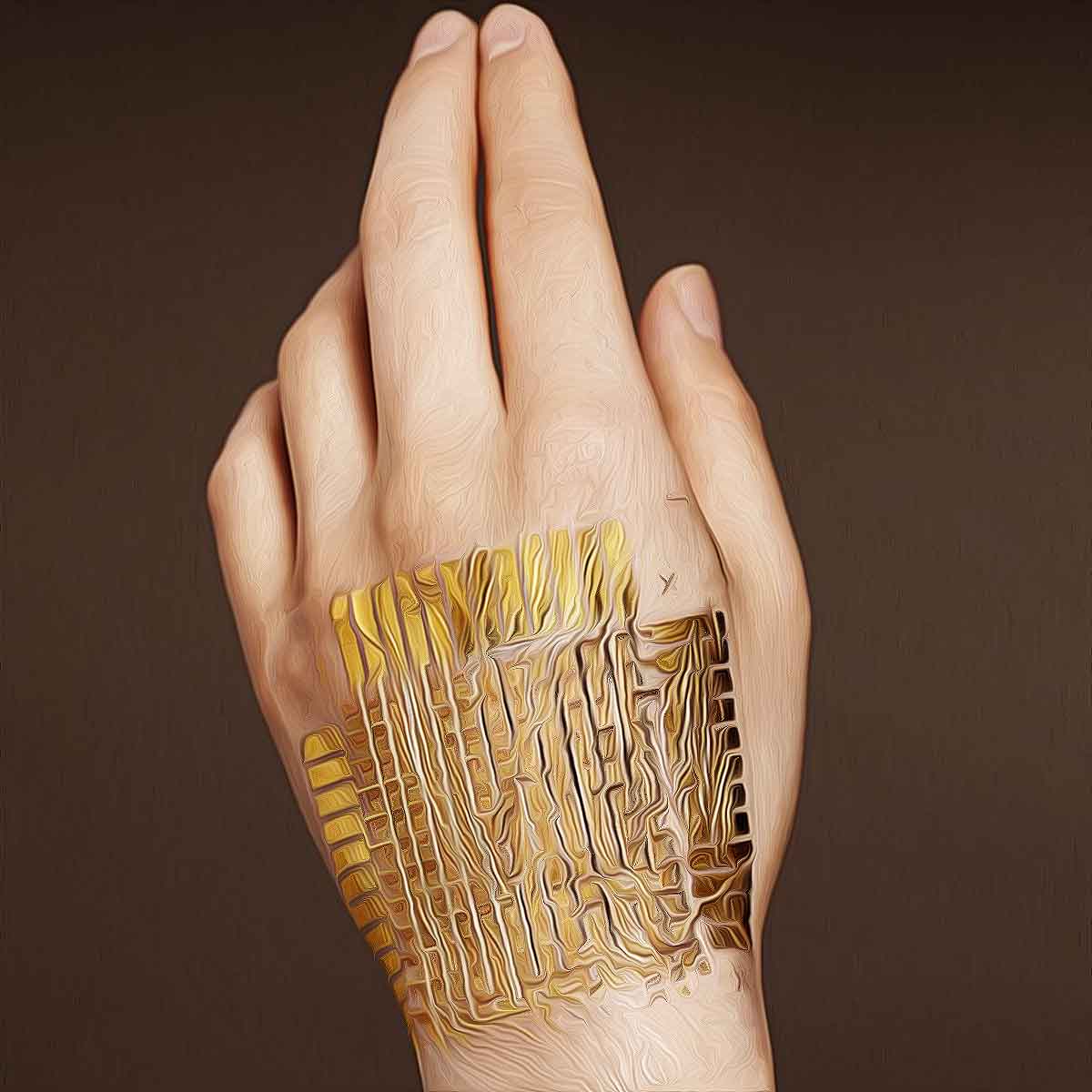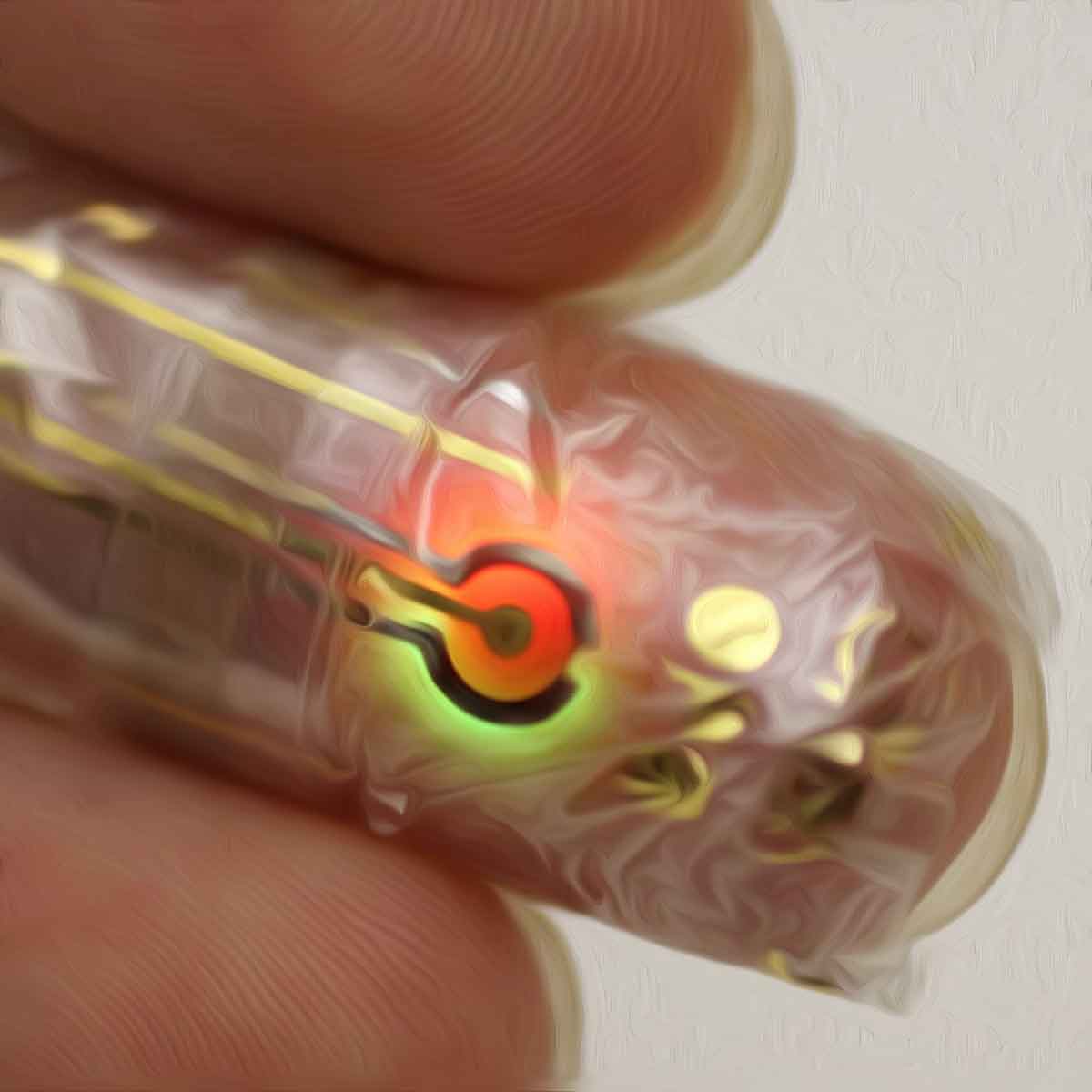MORE COVERAGE
Twitter Coverage
Satyaagrah
Written on
Satyaagrah
Written on
Satyaagrah
Written on
Satyaagrah
Written on
Satyaagrah
Written on
JOIN SATYAAGRAH SOCIAL MEDIA
Team of scientists led by Indian-origin engineer Ravinder Dahiya at University of Glasgow develops an 'Electronic skin' capable of feeling sensations like pain: could provide amputees, with prosthetics with feeling of touch that they lost

A team of engineers at the University of Glasgow in the UK led by India-born Ravinder Dahiya, Professor of Electronics and Nanoengineering at the James Watt School of Engineering, has developed an electronic skin that can feel sensations like pain.
A robot hand that uses the smart skin, has shown that it can ‘learn’ to react to external stimuli. This could help create a new generation of smart robots with near-human sensitivity
More importantly, it could provide amputees, with prosthetics -- artificial arms or legs -- with some semblance of the feeling of touch that they lost.
Prof Dahiya’s team shares details of their work in a paper: ‘Printed Synaptic Transistors based Electronic Skin for Robots to Feel and Learn’, published on June 1, in the journal Science Robotics.
|
The researchers describe how they built their prototype computational electronic skin (e-skin), and how it improves on the current state of the art in touch-sensitive robotics.
For decades, researchers have tried to create artificial (electronic) skin which possesses the sensation of touch. The widely used method was to spread an array of contact or pressure sensors across the electronic skin’s surface to allow it to detect when it comes into contact with an object. Data from the sensors is then sent to a computer to be processed and interpreted.
This can take a while: which is used to delay or degrade the electronic skin’s response to real-world tasks.
 |
E-skin that ‘learns’
The team in Glasgow, overcomes this handicap, by doing some of the processing in situ i.e., at the skin itself, avoiding too much to-and-fro traffic of the data.
In a communication to this reporter today, Prof Dahiya explained the nature of the breakthrough: “The distinctive part of our latest work is the e-skin’s capability to learn and perform some processing of tactile data, at the point of touch itself, instead of sending all raw data to the brain-equivalent on a robotic platform.”
In fact, it is how the human peripheral nervous system works -- and the Glasgow University team drew inspiration from this and mimicked the human system as best it could.
To build an electronic skin capable of quick response, the researchers printed a grid of 168 “synaptic” transistors made from zinc-oxide nanowires directly onto the surface of a flexible plastic surface. (Synaptic devices are those that have the ability to ‘learn’ in ways similar to nerve endings.) Then, they connected the synaptic transistor with the skin sensor present over the palm of a fully-articulated, human-shaped robot hand.
“We believe that this is a real step forward in our work towards creating large-scale neuromorphic printed electronic skin capable of responding appropriately to stimuli,” says Prof Dahiya, who did his M.Tech at IIT Delhi before he moved to the US for higher studies.
Adds Fengyuan Liu, co-author of the paper: “In the future, this research could be the basis for a more advanced electronic skin which enables robots capable of exploring and interacting with the world in new ways, or building prosthetic limbs which are capable of near-human levels of touch sensitivity.”
The recent work would help advances in both robotics and prosthetics, says the team.
 |
References:
 Support Us
Support Us
Satyagraha was born from the heart of our land, with an undying aim to unveil the true essence of Bharat. It seeks to illuminate the hidden tales of our valiant freedom fighters and the rich chronicles that haven't yet sung their complete melody in the mainstream.
While platforms like NDTV and 'The Wire' effortlessly garner funds under the banner of safeguarding democracy, we at Satyagraha walk a different path. Our strength and resonance come from you. In this journey to weave a stronger Bharat, every little contribution amplifies our voice. Let's come together, contribute as you can, and champion the true spirit of our nation.
 |  |  |
| ICICI Bank of Satyaagrah | Razorpay Bank of Satyaagrah | PayPal Bank of Satyaagrah - For International Payments |
If all above doesn't work, then try the LINK below:
Please share the article on other platforms
DISCLAIMER: The author is solely responsible for the views expressed in this article. The author carries the responsibility for citing and/or licensing of images utilized within the text. The website also frequently uses non-commercial images for representational purposes only in line with the article. We are not responsible for the authenticity of such images. If some images have a copyright issue, we request the person/entity to contact us at satyaagrahindia@gmail.com and we will take the necessary actions to resolve the issue.
Related Articles
- "Research is creating new knowledge, without which there is no progress": National Research Foundation - a visionary initiative by the Indian govt aimed at centralizing funding for scientific & academic research with an ambitious target of ₹50,000 crore
- "Liberty, when it begins to take root, is a plant of rapid growth": Apple already started making new iPhone 14 lineup introducing groundbreaking new technologies and important safety capabilities at Foxconn’s Sriperumbudur factory in Tamil Nadu
- “The Sea, once it casts its spell, holds one in its net of wonder forever”: A new era in cruise tourism and maritime trade across the nation started with the launch of India’s first international tourist cruise ship from Chennai to Sri Lanka
- "Sanskrit is the language of philosophy, science, and religion": A Neuroscientist, James Hartzell explored the "Sanskrit Effect" and MRI scans proved that memorizing ancient mantras increases the size of brain regions associated with cognitive function
- "Create your own miracles; do what you think you cannot do": BRO's Engineering Marvels - Bridging Gaps, Transforming Lives in challenging terrain through crucial road networks, playing a vital role in national security, and fostering socio-economic growth
- "The strongest principle of growth lies in the human choice": RBI New Proposed Guidelines for Card Networks: Empowering customers and promoting choice in Card Networks, these networks may include Visa, Mastercard, American Express, or RuPay
- Major boost for tourism as Indian Railways set to roll out Vande Bharat trains to Khajuraho, a World Heritage Site in Madhya Pradesh: UNESCO-protected temples and monuments draws tourists from worldwide
- Semiconductor Titans, Micron, Applied Materials, and Lam forging robust alliances with India, unveiling monumental billion-dollar investments to significantly bolster India's Semiconductor Mission and usher a future of unprecedented tech advancements
- "As dreams meet destiny, the world watches with bated breath": Srinagar beams under the global spotlight as the enchanting Kashmir readies for Miss World 2023, 'Mind-blowing' echoes Karolina Bielawska, encapsulating the valley's mesmerizing allure
- "In self-reliance, there is freedom and dignity": In just 18 months, India has embarked on the domestic production of 38 APIs, marking a massive stride towards pharmaceutical self-reliance. It's more than progress; it's a testament to our national resolve
- "You are what you believe in. You become that which you believe you can become": J Robert Oppenheimer, a theoretical Physicist recited a quote from Bhagavad Gita after witnessing first Nuclear explosion - "Now I am become Death, the destroyer of worlds"
- "A leap in Ladakh, a legacy for the world": India propels into a green future, launching its pioneering hydrogen bus trials in Ladakh, a bold leap in green energy, setting a global benchmark in combating climate change through innovative initiatives
- “Outstanding people have one thing in common: an absolute sense of mission”: Reports - India could become the 3rd largest Electronics manufacturer by 2027, Apple exported smartphones worth $1 billion in just one month in December' 2022
- "The bridge between reality and a dream is work": Anji Khad Bridge - An Engineering Marvel took 11 months to ready India’s first cable stayed rail bridge with 96 cables set constructed in the Reasi district of the Union territory of Jammu and Kashmir
- "Real museums are places where Time is transformed into Space": PM Modi unveils the Mascot of the International Museum Expo 2023 - a contemporized version of the Dancing girl in Chennapatnam art style to celebrate the 47th International Museum Day

























